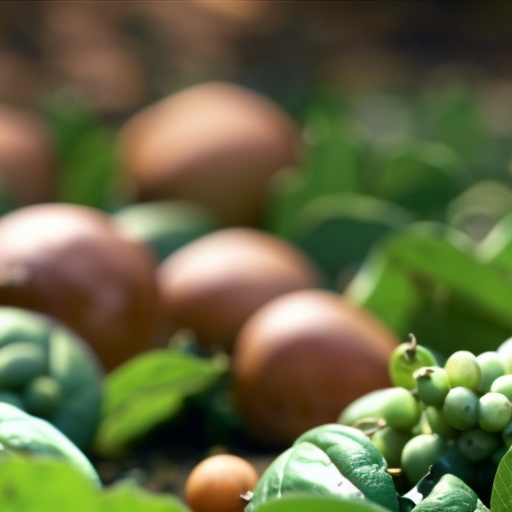
Compost Production from Pig Breeding in Deep Litter in Colombia
Introduction
Fattening pigs in deep litter is a system that has been successfully implemented in 40 farms in the area of Las Ceibas river watershed, Colombia. This system offers significant advantages, including water savings and the production of organic fertilizers through composting, which helps minimize contamination risks.
Case Study Details
This case study focuses on the collection of organic waste (excreta and bedding) from 20 fattening pigs housed in a 4∙10 m2 pen (total area: 40 m2).
Water Savings and Organic Waste Production
The fattening cycle, which includes the growing and fattening stages, lasts for five months. During this period, each pig produces an average of 450 kg of excreta (faeces plus urine). At the end of the cycle with 20 pigs, a total of 10,200 kg of organic material is collected for the next composting phase.
Pigpen Design and Composting Process
The pigpen floor is made of compacted soil with perimeter drains to prevent water runoff. The litter, which is at least 40 cm deep, ensures proper absorption and drying of the organic material. In this specific example, 750 kg of rice husks were used for a 40 m2 pig pen.
Compost Utilization
Once the fattening cycle is over and the pigs are sold, the litter is immediately collected and transferred to a flat site measuring 100 m2. The collected organic material, approximately 10 tons, is arranged in a row with a height of about 1 m. This compost is then used as fertilizer for grasses, which serve as ground cover in bioengineering projects aimed at erosion control.
SDGs, Targets, and Indicators
| SDGs | Targets | Indicators |
|---|---|---|
| SDG 6: Clean Water and Sanitation | 6.3: Improve water quality by reducing pollution, eliminating dumping and minimizing release of hazardous chemicals and materials | – The system of fattening pigs in deep litter saves water by not requiring pigpen washing, reducing water usage by approximately 2m3 per pig per month. |
| SDG 12: Responsible Consumption and Production | 12.4: By 2020, achieve the environmentally sound management of chemicals and all wastes throughout their life cycle, in accordance with agreed international frameworks, and significantly reduce their release to air, water and soil in order to minimize their adverse impacts on human health and the environment | – The production of organic fertilizers from composting pig excreta minimizes the potential for contamination. |
| SDG 15: Life on Land | 15.3: By 2030, combat desertification, restore degraded land and soil, including land affected by desertification, drought and floods, and strive to achieve a land degradation-neutral world | – The organic material collected from the pigpen is used in fertilization of grasses, which are used as coverage in bioengineering works to control erosion. |
1. Which SDGs are addressed or connected to the issues highlighted in the article?
The SDGs addressed or connected to the issues highlighted in the article are SDG 6: Clean Water and Sanitation, SDG 12: Responsible Consumption and Production, and SDG 15: Life on Land.
2. What specific targets under those SDGs can be identified based on the article’s content?
Based on the article’s content, the specific targets that can be identified are:
– Target 6.3: Improve water quality by reducing pollution, eliminating dumping, and minimizing the release of hazardous chemicals and materials.
– Target 12.4: By 2020, achieve the environmentally sound management of chemicals and all wastes throughout their life cycle, in accordance with agreed international frameworks, and significantly reduce their release to air, water, and soil in order to minimize their adverse impacts on human health and the environment.
– Target 15.3: By 2030, combat desertification, restore degraded land and soil, including land affected by desertification, drought, and floods, and strive to achieve a land degradation-neutral world.
3. Are there any indicators mentioned or implied in the article that can be used to measure progress towards the identified targets?
Yes, there are indicators mentioned or implied in the article that can be used to measure progress towards the identified targets. These indicators include:
– The system of fattening pigs in deep litter saves water by not requiring pigpen washing, reducing water usage by approximately 2m3 per pig per month. This indicates progress towards Target 6.3.
– The production of organic fertilizers from composting pig excreta minimizes the potential for contamination. This indicates progress towards Target 12.4.
– The organic material collected from the pigpen is used in fertilization of grasses, which are used as coverage in bioengineering works to control erosion. This indicates progress towards Target 15.3.
Copyright: Dive into this article, curated with care by SDG Investors Inc. Our advanced AI technology searches through vast amounts of data to spotlight how we are all moving forward with the Sustainable Development Goals. While we own the rights to this content, we invite you to share it to help spread knowledge and spark action on the SDGs.
Fuente: fao.org

Join us, as fellow seekers of change, on a transformative journey at https://sdgtalks.ai/welcome, where you can become a member and actively contribute to shaping a brighter future.





